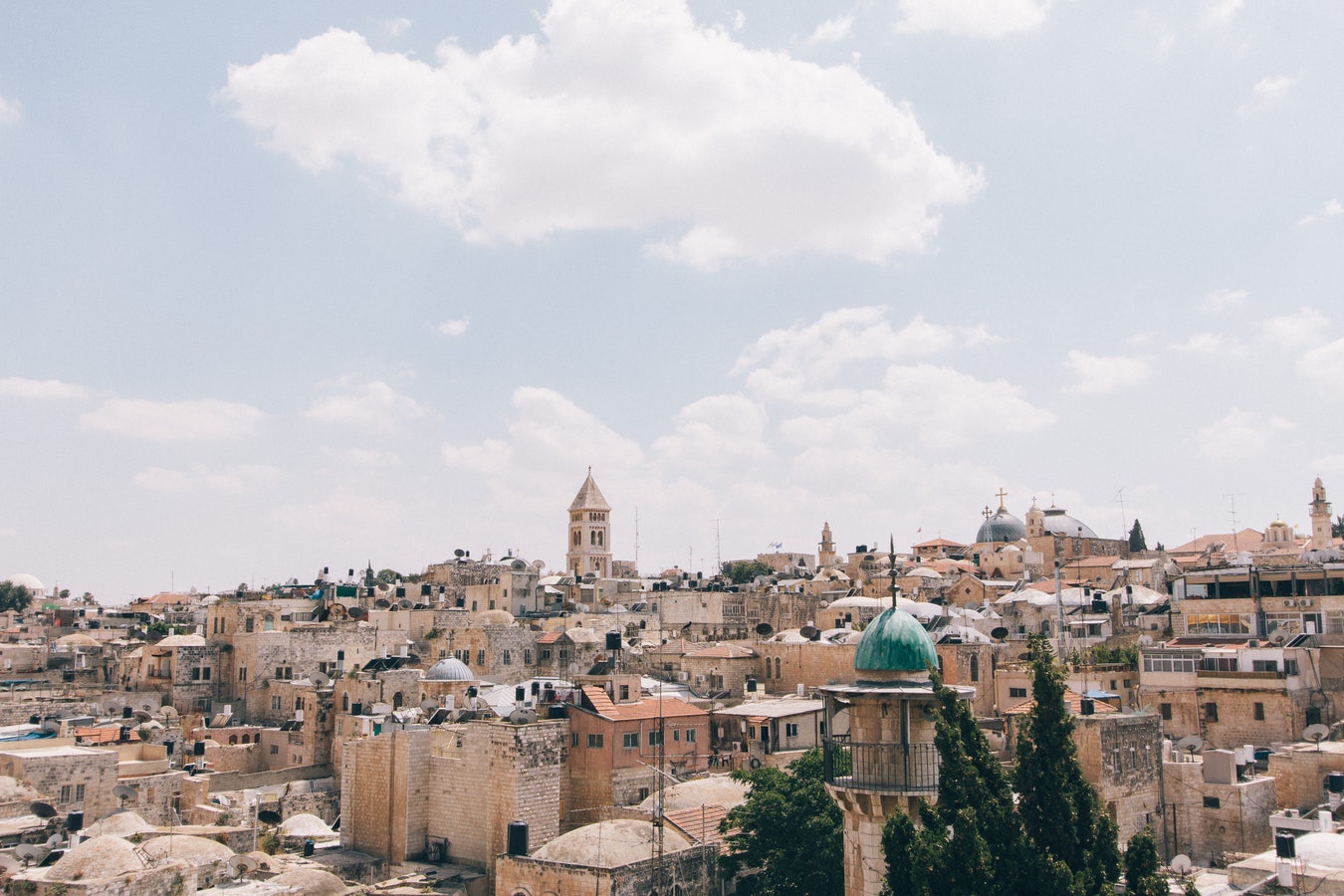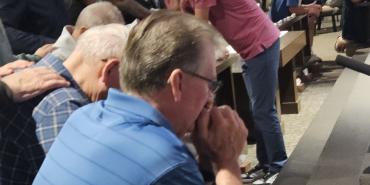A Simple "YES" That Changed the World

I walked today where Jesus walked . . . literally. I was on the cobblestone streets of Nazareth, His hometown. I had come there specifically to view the place where the opening chapter of the Christmas story was written.
I noticed a sign in Hebrew, Arabic, and English on a light post in front of a church. Some dissenting soul had defaced the symbol of the Christian cross with black spray paint. A small thing, but an indication of the tensions in this, the largest Arab town in Israel, where Christians make up about thirty-five percent of the 64,200 population.
As I ambled up the sidewalk toward the town's ancient boundaries I knew I was approaching a crossroads in history. Just down the street a banner proclaimed that Mary's well was located nearby—the place where she had daily drawn water for washing and cooking. When I turned the corner to the side street that led to the remains of first-century Nazareth, I noticed the strange mixture of merchandise offered by vendors along the way: t-shirts and toenail clippers, olive wood carvings and candy bars, postcards and pistachio nuts. The pleasant aroma of bread and sweet delicacies floated from a bakery across the street. Harried guides led tourists through the crowd, each group identified by colored scarves, baseball caps, or large nametags. The moment was indefinably enhanced by vehicles honking horns, tourist buses maneuvering through the narrow streets, and diesel fumes spewing into the air.
Suddenly, I was startled by a mass movement of men on my right. They were Muslims, bowing east toward Mecca: participating in ritual, noonday prayers in the open air, disregarding the hubbub surrounding them. Overlapping Persian carpets covered the blacktopped, triangular corner lot. A loudspeaker fastened to a small mosque blared the call to prayer. I was told that soon a new mosque would be built on this corner, in the shadow of the giant Church of the Annunciation.
Weaving through the crowded courtyard, I finally entered the ground floor of the church. All traffic flowed toward the center of the enormous room to a fenced-off area that protected what scholars agree are authentic ruins of Jesus' Nazareth. I passed the cave with its limestone walls—beige in color, simple in design.
In this very place, two millennia ago, a young Jewish woman was confronted by a heavenly visitor, the angel Gabriel, with a message that would change the world forever. "Mary, you have found favor with God. You will be with child and give birth to a son, and you are to give him the name Jesus" (Luke 1:30-31). Being of human mind, she asked how this could be possible. Gabriel assured her it would happen by the power of the Holy Spirit. Mary's response clearly reflected her obedient heart. "I am the Lord's servant" (Luke 1:38).
Did Mary fathom what this act of obedience would cost her? She might have considered her very life at stake, for she would have known about these instructions found in Deuteronomy 22:23-24: "If a man happens to meet in a town a virgin pledged to be married and he sleeps with her, you shall take both of them to the gate of that town and stone them to death—the girl because she was in a town and did not scream for help, and the man because he violated another man's wife." Even today the "honor killing" of a woman whose behavior is thought to blemish the family name is common in the Middle East. True, Mary would have the joy of motherhood. But would her child be excluded from activities with children His own age because of rumors surrounding His birth? Would He be ostracized by the village children? Would they both experience cruel taunts and isolation? It seems Mary spent no time considering such issues.
Centuries later, what really counts in Mary's Nazareth experience with the angel? What really counts is not knowing which specific cave—like structure she lived in, or dipping water from the well named after her. It is not standing in the small synagogue behind the Catholic church, knowing Jesus could have received His early religious training within its walls. Is the value in the number of pilgrims who come to pay homage to Mary's purity, her goodness, her suffering? No.
What really counts is Mary's model of obedience, her willingness to say "yes" to the task that God asked of her.
That still speaks today. She didn't demand a detailed medical report, ask for financial remuneration, or inquire about contract benefits. She just listened to God's messenger and consented to His will. And so she bore His son, our Savior and source of redemption.
Has God been speaking to you? Has He asked you to do something that isn't appealing, isn't in your schedule, and doesn't fit into your plans? Let your response echo that of Mary: "I am the Lord's servant."
Pat Stockett Johnston is a freelance writer and speaker who served 20 years as a missionary in the Middle East.
Holiness Today, November/December 2005
Please note: This article was originally published in 2005. All facts, figures, and titles were accurate to the best of our knowledge at that time but may have since changed.




